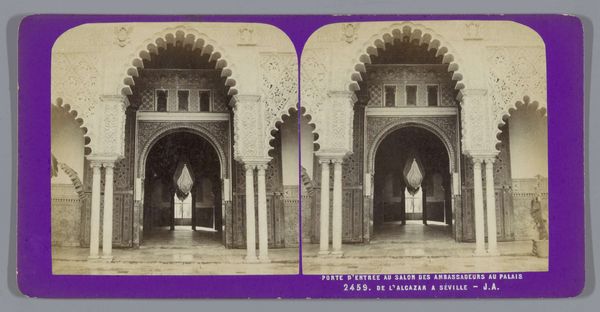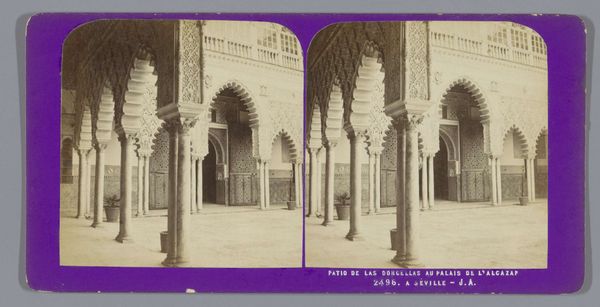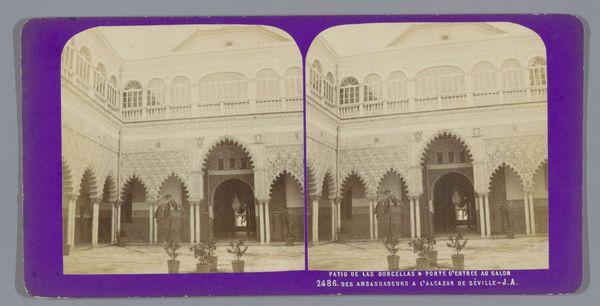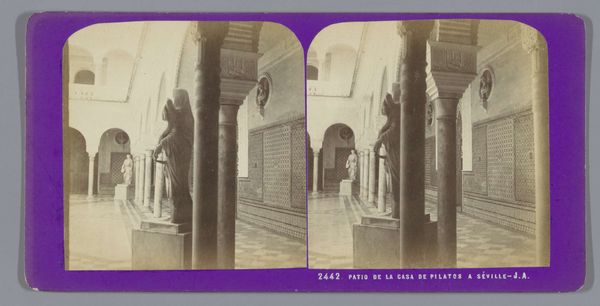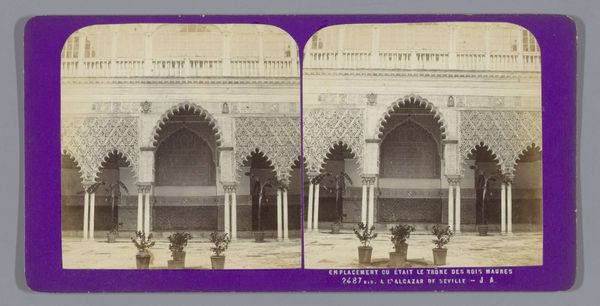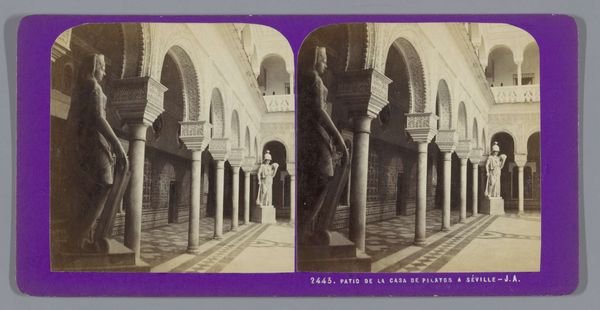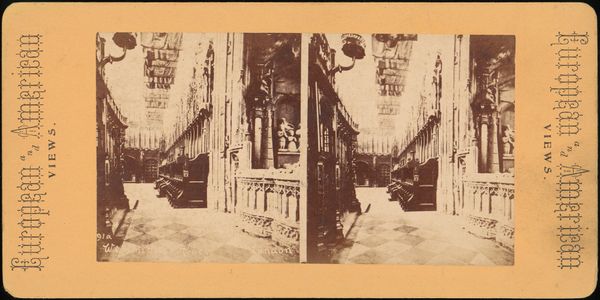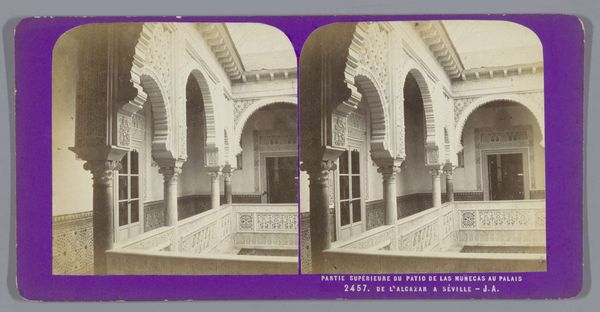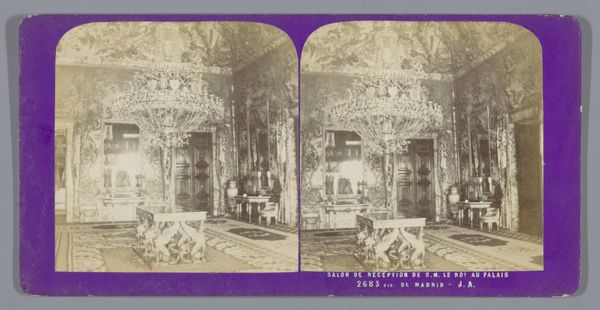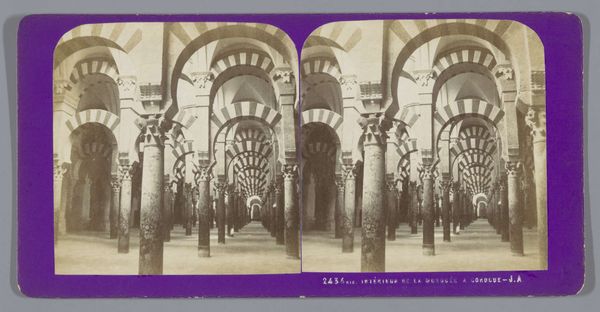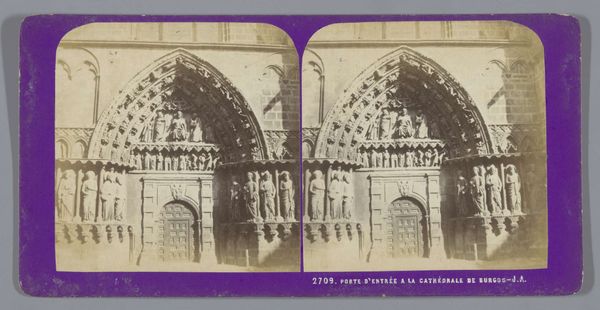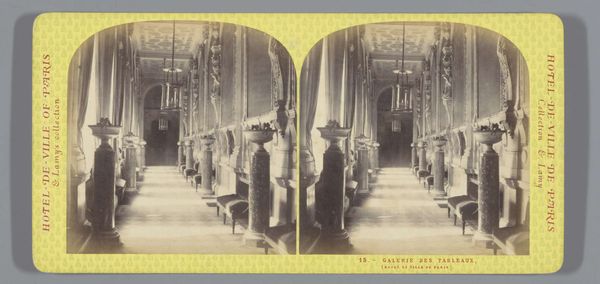
photography, albumen-print, architecture
#
perspective
#
photography
#
cityscape
#
islamic-art
#
albumen-print
#
architecture
Dimensions: height 85 mm, width 170 mm
Copyright: Rijks Museum: Open Domain
Editor: This is Jean Andrieu’s photograph, “Patio de las Doncellas in het Alcazar in Sevilla,” dating from somewhere between 1862 and 1876. It’s an albumen print, which gives it this wonderfully warm, almost sepia tone. What strikes me most is the meticulous detail and how it showcases the architecture. What do you see in this piece? Curator: I see a potent intersection of technology, labor, and colonial context. The albumen print process itself is key here. It required skilled labor, involving coating paper with egg whites and silver nitrate – materials and processes of considerable cost. And the Alcázar, a stunning example of Mudéjar architecture, speaks volumes about power, conquest, and the overlaying of cultures, particularly Islamic and Christian. Editor: So, it’s not just a pretty picture of a building, then? Curator: Precisely. This image functions as a commodity. Albumen prints like this were mass-produced and sold as souvenirs. The photographic representation of exotic architecture becomes part of the colonial project – collecting, classifying, and ultimately, controlling these cultures through visual means. Consider the laborers involved in constructing the Alcázar, and those in Andrieu's studio... whose stories aren't being told in this print? Editor: That’s fascinating. I hadn't thought about the process that way, almost as a form of… appropriation? Curator: You've got it. And beyond the obvious colonial power dynamic represented, consider that photography itself, with its chemicals and paper, contributed to the industrial economy. Editor: I never thought about that aspect of it before. Curator: Photography's creation depended on systems of labour that extend beyond Andrieu or the visible architecture. Each one part of this intricate socio-economic network that is deeply intertwined with our experience and understanding of art. Editor: That’s given me a completely different perspective. Curator: Good, it’s important to see the full spectrum of meaning and cultural context through artistic practice, moving beyond purely aesthetic appreciation.
Comments
No comments
Be the first to comment and join the conversation on the ultimate creative platform.
